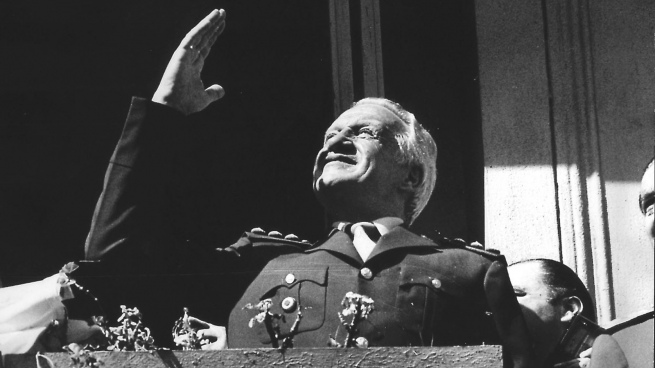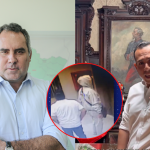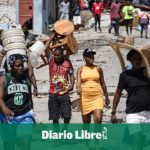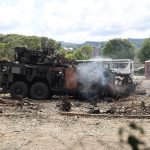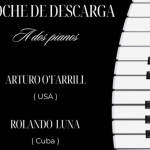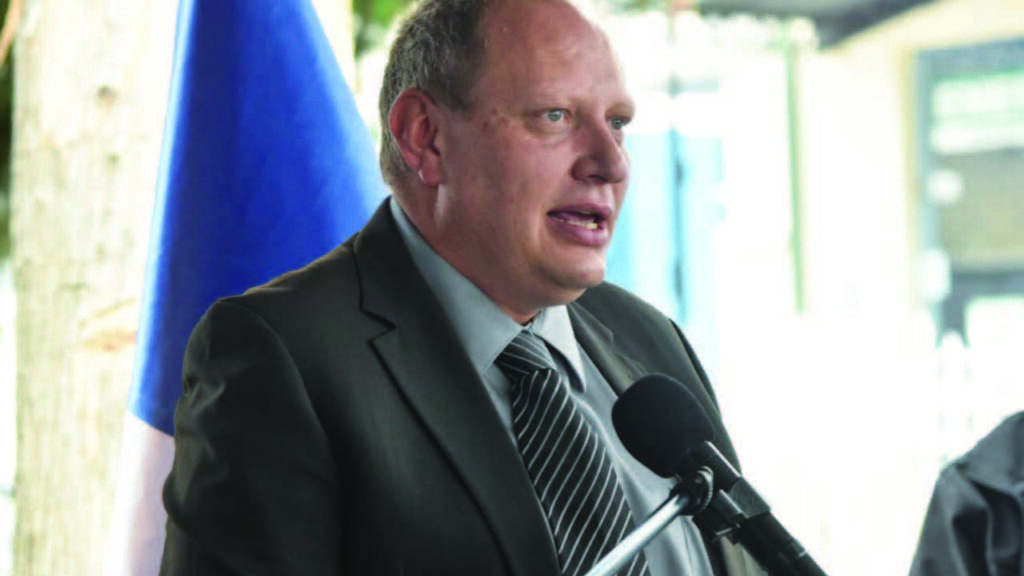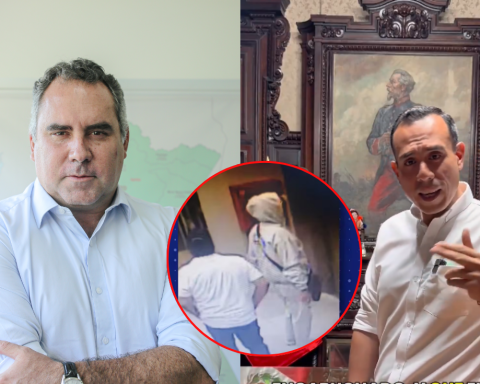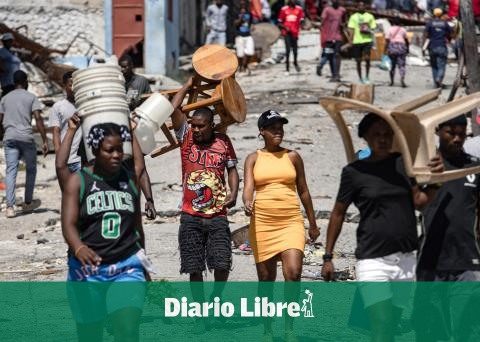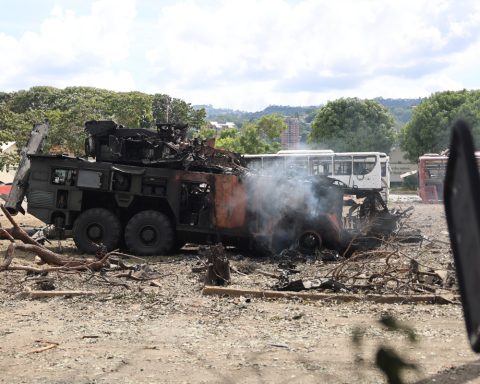A persistent economic crisis, a growing climate of social conflict and the increasingly visible demands of human rights organizations led the last civil-military dictatorship to seek a new basis of legitimacy, and the recovery of the Malvinas Islands, usurped by Great Britain since 1833, was presented as the opportunity to save the political project started six years earlier by the Armed Forces.
A country under dictatorship
The economic model of financial appreciation, opening of exports and undervalued dollar had entered a definitive crisis at the beginning of 1981 with increased unemployment, high inflation and falling real wages.
The general Robert Violawho in April of that year had replaced Jorge Rafael Videla in the Presidency, appointed as Minister of Economy Lorenzo Sigautwho proposed to unfold the foreign exchange market with a financial dollar, considered “free”, and another “commercial”, regulated with values that were modified periodically.
“He who bets on the dollar loses” was the famous phrase that Sigaut pronounced when putting an end to the famous “tablet” established by his predecessor, José Alfredo Martínez Hoz, which consisted of a gradual devaluation schedule of the peso that promoted financial speculation.
However, shortly after making those announcements, which seemed to have an industrialist tinge, Sigaut promoted a 30 percent devaluation and his management lost credibility in public opinion.
Galtieri’s arrival in power
Worn out by the crisis and questioned by the Army and Navy headquarters, Viola He was summoned by the Military Junta to resign from the Presidency on December 10, 1981.
Viola, who was in effective military retirement, refused to leave his post.
The next day, Navy Admiral Jorge Anaya and Army General Leopoldo Fortunato Galtieri decided to remove him anyway, and announced to the country that he would be relieved of command for reasons of state..

The replacement was completed on December 22, when Galtieri assumed the Presidency, without leaving the command of the Army, which generated some rudeness in military sectors, something that resulted in the support that Anaya and the Navy gave the new de facto president. .
In return, Galtieri gave the go-ahead to an old desire of the Navy: the deployment of a plan to recover the sovereignty of the Malvinas Islands.
“The idea of recovering the Malvinas with a short and simple operation was a plan that the Navy had had for a long time and the possibility of carrying it out came at that moment, in which the dictatorship seemed exhausted. Anaya and Galtieri agreed that this was the It is time to bring society together around a military government again,” Federico Lorenz, historian and former head of the Malvinas and South Atlantic Islands Museum, told Télam.
And the signs of civil society exhaustion were unmistakable, even before Galtieri took office.
On December 16, the Multiparty, made up of the Justicialist Party (PJ), the Radical Civic Union (UCR), the Integration and Development Movement (MID), the Intransigent Party (PI) and the Christian Democracy signed a document in which called for the implementation of an electoral calendar.
Along these lines, the CGT called for “a Christmas in Peace” and demanded the participation of “all sectors in national life” in the face of a military process that “had failed in its objectives.”

The recovery plan
Before the change of government, on December 15, 1981, Anaya had asked Vice Admiral Juan José Lombardo, commander of Naval Operations located at the Puerto Belgrano base, to draw up a plan to occupy the Malvinas quickly and with an operation that will not last over time.
Two days later, on December 17, Brigadier Basilio Lami Dozo took over as representative of the Air Force in the Military Junta.
Thus, the trinomial already made up of Galtieri and Anaya was completed and they planned to exercise the Executive Power until 1984.
The Board then defined its objectives, and among them was “to intensify efforts to reaffirm Argentine sovereignty in the Malvinas, Georgias and South Sandwich Islands.”
At the beginning of 1982, the military regime had decided to intensify negotiations with Great Britain for the Malvinas, and in the case of not obtaining answers, to analyze a possible landing.
Nicanor Costa Méndez, who had served as foreign minister of the dictator Juan Carlos Onganía, returned to occupy the leadership of the San Martín Palace when Galtieri was appointed.
A lawyer for several multinational companies, “Canoro”, as his intimates nicknamed him, managed diplomatic relations during the Malvinas conflict; In the days before the conflict, in meetings with military commanders, he slipped the idea that the British “were not going to command the fleet.”
Costa Méndez assumed that Margaret Thatcher’s government, unpopular due to the adjustment policies it had been imposing, would have difficulties in moving a naval force to such a remote place in the south.

The military and the chancellor also considered that the United States would not intervene in the event of a conflict, based on the good relations that the dictatorship had with the government of Ronald Reagan.
Argentina had deployed advisers to El Salvador and Honduras to train local troops in counterinsurgency techniques, and this was a gesture that Washington appreciated, according to the Argentine military.
During 1981, Argentina and the United Kingdom maintained diplomatic negotiations regarding Malvinas that did not come to fruition..
On February 26, a new round of diplomatic meetings takes place in New York and there is no progress given the British insistence on considering the position of the islanders.
Meanwhile, in Argentina, the claim of human rights organizations was gaining more and more visibility in a society that was slowly beginning to question the disappeared and the victims of the dictatorship’s task forces.
On December 9, 1981, the Mothers of Plaza Mayo organized the first march of the Resistance, with a round to the pyramid of Mayo that lasted 24 hours with a resounding claim: the “Appearance alive”, of the disappeared detainees. .
On Thursday, March 18, after the usual round of the Mothers in the Plaza de Mayo, more than three thousand people marched through downtown Buenos Aires to demand information about the disappeared, in an unprecedented demonstration for those times of State Terrorism.
On March 30, the CGT mobilized in Plaza de Mayo under the slogan “for Peace, Bread and Work” to demand changes in economic policy and the demonstration, which was violently repressed, was a clear sign of the weakening of the military regime.
But the preparations for war did not stop despite the complicated prevailing social context, and the plans for the occupation continued in progress.
Based on a contract that the businessman Constantino Davidoff had in the Georgian Islands to dismantle constructions, the Navy landed a group of sailors in Port Leith among the workers who were going to remove abandoned whaling structures.
After getting off the Bahía Buen Suceso ship, the group of Argentines sang the anthem and raised the national flag, which alerted the British authorities, who denounced that the presence was illegal.
Commanding this group of soldiers mixed with the workers was a renowned ESMA repressor: Navy Lieutenant Alfredo Astiz.

The British government reacted by sending a team to evict this group, which led to a conflict on those islands that escalated to the recovery of the Malvinas Islands.
On March 28, a fleet of the Argentine Navy set sail from Puerto Belgrano heading south, and on the 31st it cut off communications with the mainland and headed for Port Stanley, the administrative capital of the islands.
The British learned that the Argentines were about to land on the Malvinas, and on April 1 Thatcher met with her cabinet and stated: “If the Falklands are invaded, we have to recover them.”
The cards were drawn and the winds of war began to blow strongly in the South Atlantic.
